While checking the Masonic life of one Brother, the researcher often finds other Brothers or events that are interesting and worthy of mentioning and sharing.
For example, when researching the Masonic career of Brother Washington, you might find a great book, ‘George Washington: Freemason’ by William Moseley Brown, P.G.M.
The description on Amazon reads:
Published in the George Washington Masonic Bicentennial Year under the authority of the Grand Lodge A. F. & A. M. of Virginia.
This book was written in the year 1952, which was proclaimed as the Masonic Bicentennial of the Initiation of Worshipful George Washington.
Notes on MW Brown read that he was ‘considered by his contemporaries to be the greatest George Washington scholar of his day.’
One of the books, by Most Worshipful William Moseley Brown, was prepared as a history to celebrate the ‘Centennial History of Mountain City Lodge, No. 67, A.F. & A.M. 1857-1957’ where MW Brown was initiated an Entered Apprentice on November 21, 1921, passed to the degree of Fellowcraft on December 19, 1921, and raised to the sublime degree of Master Mason on January 2, 1922.
He served as Worshipful Master at his home lodge beginning in December 1925.
In February 1926, he was appointed District Deputy Grand Master for Masonic District No. 20 and served two terms.
He was elected Grand Junior Deacon of the Grand Lodge of Virginia in February 1929 and became Grand Master of Masons in Virginia in 1934. [i]
Brother Brown was the author of fifteen books on Masonry and other allied subjects.
Mountain City Lodge, No. 67 is in Lexington, Virginia. Two outstanding colleges are also in Lexington – Washington & Leeand the Virginia Military Institute. Oh, and Kappa Alpha fraternity was started at W&L. Recently both these colleges made the headlines with the idea of eliminating pieces of their histories from their Civil War connection with name changes for W&L and the Lexington cemetery, and – not only in Lexington – but the tearing down of related or even unrelated statues throughout the country. At VMI there are statues being threatened. One is William James Hubard’s bronze copy of Jean-Antoine Houdon’s General Washington and another there by a famous sculptor and a Brother of Mountain City lodge, Sir Moses Jacob Ezekiel, and his statue, Virginia Mourning Her Dead.
In Sir Moses’ biography, the first mentioned fact is that he was the first Jewish cadet to attend VMI.
What encouraged Moses and his family to make this move? His family were merchants.
His father and grandfather were quite successful, at least until the war was over.
However, Moses was certainly influenced by, maybe guided by his father, Jacob Ezekiel (who had thirteen other children), and his step grandfather, Moses A. Waterman helped in choosing the path to VMI. Jacob and Mr. Waterman certainly were close to each other even outside the family and within the community.
In 1837, Isaac Leeser published a prayer book for the Sephardic ritual.
This publication was both pretentious and costly, and consisted of a number of volumes. Among the subscribers in Richmond were Jacob and Moses Waterman. [ii]
In 1844, Jacob and Moses, together again, were named as appraisers by the court as administrators of Ezekiel Solomon’s estate. [iii]
And on September 8, 1862, grandfather Waterman sent a note to the Superintendent, Major General Francis H. Smith, stating that Moses Ezekiel’s had accepted the opportunity to attend VMI. [iv]

Francis Henney Smith (1812-1890), first Superintendent of Virginia Military Institute from “The Virginia Military Institute: Its Building and Re-building”. Lynchbyrg, Va.: J. P. Bell Co., 1912, Frontispiece.
IMAGE LINKED: wikimedia Attribution 4.0 International (CC BY 4.0)
As a businessman and father, Jacob Ezekiel was very active in the politics of Richmond prior to the war.
Almost upon arrival from his Philadelphia birthplace and his move to Richmond, he became a power in the affairs of Beth Shalome Congregation (then known as the Portuguese synagogue), and had a personal connection with Jacob Mordecai, the ‘venerable’ head of the Jewish community.
Masonry was very active in the world, in America and in Richmond, Virginia during the early 1800s.
Brothers were welcome, as today, regardless of their religion. Same rules:
A candidate must be male, at least 18 years of age, profess a belief in a Supreme Being, and be of good character.
The only religious requirement is that candidates believe in a Supreme Being.
If you can in good faith and profess such a belief, regardless of your religious affiliation, then you are eligible to be a Mason.
Richmond Lodge, No. 10, A.F.& A.M. is one of the oldest lodges in the state, having been chartered December 28, 1780. In that lodge, and other lodges throughout, there certainly were Jewish Brothers.
Beth Shalome Congregation was active, some sources say, as the sixth oldest congregation in the United States, prior to 1790.
In April that year, the Jewish congregations felt called upon to express congratulations and assurances of support on the occasion of Washington’s inauguration as the first President.
Shearith Israel of New York, being the oldest congregation, had been chosen to put a joint address together. New York asked Philadelphia (the capitol) to do it instead.
The New York, Philadelphia, Charleston and Richmond congregations then combined in their wishes:
‘to unite in affection for our character and person every political and religious denomination men, and in this will the Hebrew congregations aforesaid yield to no class of their fellow citizens.’ [v]
A few years before Beth Shalome dissolved, the thought was to preserve the site’s cornerstone.
A search of the records in three Masonic lodges failed to show that any lodge did lay this cornerstone. The thought was that a president of the congregation having been Virginia’s Grand Master – Solomon Jacobs, (1810 – 1812) – may have had it laid by the Grand Lodge itself as a compliment, but the stone was never found. [vi]
Another Brother in 1849 was Henry Myers, Master of Richmond Lodge, No. 10. [vii]
Early in his life, Jacob Ezekiel served with the Richmond Rifle Corps, the Richmond Grenadiers and then the Richmond Greys (units of Virginia and the American army) and later during the Civil War – on account of being over age – he was enrolled in the second-class militia and served at the inner and intermediate breastworks around Richmond. [viii]
He was very active practicing his faith, his beliefs and defending his Jewish heritage.
There was certainly, not only in Richmond, but in the country, a strong anti-Semitic feeling. Jacob began as an apprentice book-binder in 1834, then when he moved to Richmond, Va., started a small dry goods business.
Soon after, he wrote to President John Tyler concerning a proclamation proposed for a ‘national day of prayer’ that would be in memory of President Harrison, and that Jacob felt was marked by sectarianism and inappropriateness.
President Tyler sent a most courteous and apologetic reply dated Washington, April 19, 1841:
‘Sir: I beg you to be perfectly assured, that in using the language in my recommendation to the people of the United States to observe the 14th of May as a day for religious exercises, in consequence of the bereavement which the country has sustained in the death of the late President, I designed in nothing to exclude any portion of my fellow – citizens from a cordial union in the solemnities of that occasion.
In speaking in the first paragraph of the duties of Christian people, I meant in no way to imply that similar duties should not be performed by all mankind.
The last paragraph is an invitation to all and excludes the idea of any special invocation.
For the people of whom you are one I can feel none other than profound respect.
The wisdom which flowed from the lips of your prophets has in time past and will continue for all time to come, to be a refreshing fountain of moral instruction to mankind – while Holy records bear witness of Divine favors and protection of the God of Abraham and of Isaac and of Jacob, God of the Christian and Israelite , to his chosen people — may I then hope , Sir , that this explanation will remove all difficulties , and that your voice and the voices of all your brethren will ascend to our Common Father in supplication and prayer on the day I have suggested.
I tender you assurances of great respect,
Mr. Jacob Ezekiel. ‘
‘John Tyler, President’ [ix]
Jacob A. Levy, Jacob Ezekiel’s brother-in-law, assisted him in securing the amendment to the code of the State, which put an end to the persistent practice of arresting Jews who kept their places of business open on Sunday. [x]
Soon after, on October 13, 1843, at Aaron Sinsheimer’s café on New York City’s Lower East Side, B’nai B’rith was founded by recent German Jewish immigrants.
Some of the twelve founders were thought to be members of Freemasonry and also of the Odd Fellows.
The leader was one Henry Jones (real name Heinrich Jonas) born in Hamburg in 1811 and after moving to New York was head of the Ansche Chesed Hebrew School.

Independent Order of B’nai B’rith membership certificate (1876), the predecessor organization to B’nai B’rith International. By Louis Kurz (1833-1921), for the American Oleograph Company – Public Domain
IMAGE LINKED: wikimedia Attribution 4.0 International (CC BY 4.0)
The other members were Isaac Rosenbourg, William Renau, Reuben Rodacher, Henry King, Henry Anspacher, Isaac Dittenhoefer, Jonas Hecht, Michael Schwab, Hirsch Heineman, Valentine Koon and Samuel Schaefer.
All were small shop-keepers in lower Manhattan. Dittenhoefer was chosen as President and Jonas as the Secretary.
Brother Edward L. King wrote that:
‘Claims that the organization was founded by Masons are false to fact.
Only four of the twelve charter members (Jones, Roadacher, Renau, and Isaac Rosenbourg – just 1/3rd) were members of the Masons and Odd Fellows.’ [xi]
The organization was formed to foster education and to improve the Jewish image in America.
Although early meetings were conducted in Yiddish, after a short time English emerged as the language of choice and the name was changed to ‘B’nai B’rith.’
The new organization represented an attempt to organize Jews of the local community to confront what one of the founders, Isaac Rosenbourg, called:
‘the deplorable condition of Jews in this, our newly adopted country’.
The new group’s purpose, as described in its constitution, called for the traditional functions performed by Jewish societies in Europe:
‘Visiting and attending the sick’ and ‘protecting and assisting the widow and the orphan.’
The early structure of the B’nai B’rith borrowed a number of features from Masonry and Odd Fellows.
It adopted a secret ritual (six degrees), its members had secret recognition signs, and it used the blackball method of rejecting undesirable applicants for membership.
From its very first meeting it was a fraternal and benevolent society.
Each lodge was obligated to collect dues from all its male-only members so that a fund for widows and orphans could be operated.
Two years after its inception, some members participated (in their lodge regalia) in the funeral procession of President Andrew Jackson in June 1845. [xii]
Jones felt that the regalia and secrecy, the benefits and fellowship of the friendly societies of the day were also effective in inducing men to belong.
Although his new society at first embodied these Masonic features, by 1890 these ‘benefits’ were abandoned. [xiii]
In 1851, and then again three years later, Mr. Ezekiel protested against the ratification of a treaty with Switzerland. [xiv]
The treaty covered the business relations between the two and Mr. Ezekiel reasoned that it:
‘boasted of a progressive form of government but persecuted the Jews who resided or who came within certain of its cantons.’
Virtually from its beginning the B’nai B’rith has been concerned with overcoming anti-Semitism.
The order sent letters of protest to the American Secretary of State, Daniel Webster, and others regarding anti-Semitism practiced in Switzerland, which in a treaty at that time with the United States prevented Jews from living in given Swiss cantons. [xv]
Mr. Ezekiel’s dislike of the Swiss government – because of the strong persecution of Swiss Jews – rose again and he even opposed the acceptance by the Government of a block of granite, contributed by the Swiss Federation to be placed in the Washington Monument in 1852.
Soon after construction began on the Washington National Monument Society, it ran out of money and the project ground to a halt.
Later, while not a Mason, the idea of B’nai B’rith (and its similar mission) appealed to Mr. Ezekiel and he was very active as a charter member of Rimmon Lodge, No. 68 (his obit says No. 69) and this is known as the oldest fraternal body in Richmond, founded in October 1865. [xvi]
Because of such a large family, the children were divided between the homes of the grandparents and parents, as both families were living in Richmond.
Moses moved in with his mother’s parents. His mother (Catherine de Castro) and his aunt (Rebecca de Castro Jacobson) were children of Hannah Peper (born in 1802) who married her husband Jacob Louis Abraham de Castro in 1817.
Mr. de Castro passed away in 1834 and Catherine married Levi Jacob Myers and on his passing a year later (died 1835), soon married Moses Abraham Waterman, April 1, 1838.
By the time Moses moved in with ‘Mummy,’ Moses Waterman was accepted as his grandfather.
Waterman and Mr. Ezekiel were both active businessmen in Richmond in the same section of town.
Once the Civil War began, some families were divided politically. ‘Abba,’ Jacob Ezekiel, remained in Richmond during the Civil War strictly on account of his large family and even contributed to the relief of the Union prisoners at Libby prison in Richmond.
A number of families from Richmond did also head north when the war broke out.
Moses’ older brother, Ezekiel M. Ezekiel, born July 9, 1841, had enlisted as a member of the Richmond Grays, Company A, of the 1st Virginia Volunteers.
His company was to be called into service in 1859 before the war began.
The unit was ordered to Harpers Ferry, (West) Virginia for the capture and then the trial of John Brown who had seized the arsenal and had taken two local planters as hostages, including Lewis Washington, a great-grandnephew of George Washington. [xvii]
The unit then moved to Charlestown, (West) Virginia – some seven miles away – to witness Brown’s hanging.
This trial and hanging were attended by many officers and men who gained attention later in history.
For example, also at the hanging were General Robert E. Lee, Major Thomas ‘Stonewall’ Jackson, J. E. B. Stewart, a Harper’s Weekly reporter and artist – David Hunter Strother, the VMI Corps and John Wilkes Booth!

Thomas ‘Stonewall’ Jackson (1862) By Nathaniel Routzahn (1822 – 1908), Winchester, Virginia – Valentine Richmond History Center, Cook Collection, Public Domain
IMAGE LINKED: wikimedia Attribution 4.0 International (CC BY 4.0)
An interesting story written about the hanging was from another Richmond Gray. ‘The Life of Philip Whitlock, Written by Himself,’ states that:
Many of us were surprise to see John Wilkes Booth, who was then acting in the Marshall Theatre, in a Richmond Gray uniform.
We afterwards were informed that he joined the Company in order to go along with us.
We stayed there three weeks until he (John Brown) was hung, in which our company was present as a “Body Guard”, being about 30 feet from the gallows.
John Wilkes Booth, being about the same height as I, was right next to me in (the) rank.
When the drop fell, I noticed that he got very pale, and I called his attention to it.
He said that he felt very faint and that he would give anything for a good drink of whiskey.
Of course, he did not get it then. We stayed in Charlestown about three weeks and then returned to Richmond. [xviii]
David Hunter Strother would visit Lexington when he was commissioned and serve under a distant relative, General David Hunter.
After Harpers Ferry, the Grays returned to Richmond and when the war actually broke out, went to Norfolk as part of the 12th Virginia.
There were a number of Jewish soldiers including Ellis Ellis, Herman Hirsh, Isadore Lovenstein, Simon Rosenfels or Rosenfield, and Philip Whitlock and Ezekiel M. Ezekiel.
These young men were all sons of Jewish merchants in downtown Richmond.
Our Moses Ezekiel had dropped out of school at the age of 14 as had his father. He spent time making small statues and busts out of clay.
I began my work in sculpture in my little studio by making a bust of ‘Cain Receiving the Curse of the Almighty’.
When that was completed, I began to make a colossal bust of ‘Moses Receiving the Law on Mount Sinai.’
My grandmother was horrified at the idea of my attempting to make a bust in which the presence of the Deity was conceived.
I did not know that I ought to have built it up on iron supports, and on entering my studio one afternoon, I found my bust had fallen to the floor and was entirely destroyed.
I went home very dejected, and on telling my grandparents what happened, my grandmother said, ‘I knew something would happen to that bust! You ought never to have attempted it, its destruction was the simple justice of God’. [xix]
Moses Ezekiel wrote:
‘I come now to more stirring times. November 6, 1860 was a very momentous day in the history of America, because a sectional president had been elected – Abraham Lincoln – who had not received a single vote in all of the fourteen Southern states.
This was evidence that the fundamental principles of our government had been violated, and that it would be impossible for the South to submit to being ruled by a party who were opposed to state rights and free trade.’

Abraham Lincoln. By Alexander Gardner, Public Domain
IMAGE LINKED: wikimedia Attribution 4.0 International (CC BY 4.0)
A footnote reads, ‘Of some four and a half million votes cast, Lincoln won less than two million: these last included twenty-four thousand in the slave states’. [xx]
Also, from Ezekiel’s ‘Memoirs’:
‘South Carolina seceded, and before February 1861, several of the other Southern states joined her.
Virginia, the Mother of Presidents, the Old Commonwealth (Old Dominion), as she was called, was very loath to secede from the Union.
She tried to arbitrate for peace and sent a peace commission to Washington to argue the matter, but it failed.
No slavery question entered the matter at all, but when the President of the United States called upon Virginia to furnish her quota of troops to help subjugate her sister Southern states, then Virginia had to decide, and so in April 1861 she seceded from the Union.’ [xxi]
When war began, Moses Ezekiel wrote, with the bombardment of Fort Sumter and South Carolina, ‘bonfires broke out on almost every corner of town.’ [xxii]
‘I became so enthusiastic that I begged and entreated my grandparents to let me go to the Virginia Military Institute as a cadet, secretly hoping it would be one of the means of my getting into the war.’ [xxiii]
Moses Waterman’s correspondence related that he’d initially believed Ezekiel wouldn’t be able to come to VMI at all because of ‘war conditions.’ [xxiv]
With the strong influence of his family politically, however, there was no problem and Moses became the first Jewish cadet at VMI.
‘From an educational standpoint, it seemed very hazardous for me to attempt to pass an examination for entering a military school, but I received an appointment, passed my examination, and in September 1862 left my house for the first time in my life.’ [xxv]
Moses adds later that I found it very hard to keep up with a class of boys who had never left school and were well prepared, both in mathematics and Latin, before entering the Institute.
I had to overcome my ignorance by very hard and continuous study. [xxvi]
As VMI’s first Jewish cadet there were some unusual letters from the grandfather who asked the Superintendent General Smith to get the Board of Visitor’s permission for Moses to be furloughed for ‘The Feast of Unleavened Bread.’
Moses, by the way, in May, 1863, had just been a corporal of the guard responsible at the funeral in Lexington for General ‘Stonewall’ Jackson and had the primary mission of ensuring that overzealous cadets didn’t pluck too many floral souvenirs from Jacksons heavily bedecked metal casket as it lay in state in his old VMI classroom before burial. [xxvii]
And, please ‘excuse him from VMI summer camp in 1863 for fear of ‘disease’ he might contact from exposure. [xxviii]
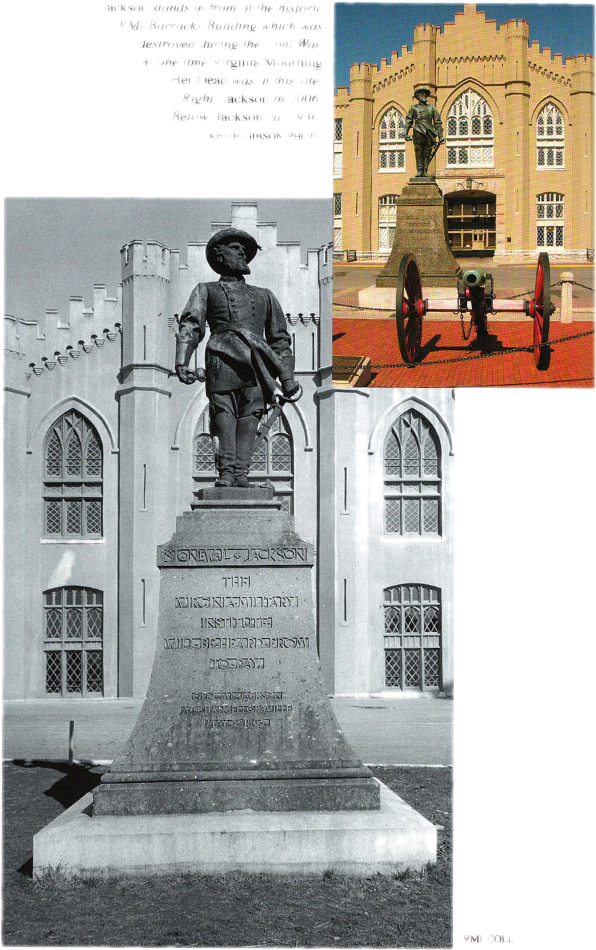
Statue of ‘Stonewall’ Jackson. Image Credit: Moses Ezekiel: Civil War Soldier, Renowned Sculptor by Stan Cohen & Keith Gibson.
IMAGE LINKED: Attribution 4.0 International (CC BY 4.0)
In the spring of 1863, Moses had been a Cadet a little more than a year.
Some Cadets had left the Institute to join other units in active service.
The Corps were aroused ‘from their slumbers’ by the beating of a long roll.
Moses wrote:
‘I think we all knew, when we heard those drums, what was coming.
In less than ten minutes every man was on foot and in line before the barracks, facing the statue, a bronze copy of William James Hubard’s copy of Jean Antoine Houdon’s General Washington. [xxix]
The statue had, for eight years, been a point of inspiration to cadets and to the residents of Lexington, a proud reminder of the ‘Father of the Country.’ [xxx]

Washington bronze copy by William James Hubard after Jean Antoine Houdon at the Virginia Military Institute. By Zeete – Own work
IMAGE LINKED: wikimedia Attribution 4.0 International (CC BY 4.0)
William James Hubard, a distinguished sculptor who cast in bronze many of these Houdon statues – this was the first – was from Richmond and this was the first bronze statue to be cast whole in the United States.
His son, also William James Hubard, later entered VMI in 1862 along with Moses.
As a second classman he was a cadet private in Co. A at New Market.
The following year he was commissioned a lieutenant in the First Confederate Foreign Battalion and served from November 1864, until he re-entered VMI on February 23, 1865 and for the remainder of the session was the private secretary to the commandant, Scott Shipp.
He taught school for several years, then was in civil engineering and in business, until 1896, when he was employed as Assistant Lecturer and then as Grand Lecturer in 1898.
He was a prominent member of many Masonic orders and in 1901 was Grand High Priest of the Royal Arch Masons of Virginia, which in 1924 established as a memorial to him, ‘The W. J. Hubard Scholarship.’ [xxxi]
William’s grandson was N. Walter Hubard, a 1898 VMI graduate and his great-grandson, Harrison Hubard was graduated in 1938. [xxxii]
The Corps of Cadets was soon needed in the Valley of Virginia to help General John Cabell Breckinridge drive back invaders.
When Moses left VMI to fight in the Valley (about May 10) and then at New Market – May 15, 1864 – the Corps turned the tide and won this battle.
Moses left us a number of great and also sad stories of the battle in his ‘Memoirs’.
He spoke about the Richmond friends he had lost in the battle, the great example of the Cadets in the fight, his time caring for his friends and then finding his wounded roommate, Thomas Garland Jefferson, who was the grandnephew of the Thomas Jefferson, how he found him, and how he took care of him and, upon request that Moses read the Bible, beginning at John 14:2 – ‘In my Father’s house are many rooms; if it were not so, would I have told you that I go and prepare a place for you, I will come again and will take you to myself, that where I am you may be also’ when young Jefferson passed.

Self Portrait of William James Hubard By William James Hubard – Albert Ten Eyck Gardner. Southern Monuments: Charles Carroll and William James Hubard. Metropolitan Museum of Art Bulletin, New Series, Vol. 17, No. 1 (Summer, 1958), pp. 19-23., Public Domain
IMAGE LINKED: wikimedia Attribution 4.0 International (CC BY 4.0)
Ten Cadets – our boys, wrote Moses – were killed in the Battle of New Market. The war certainly wasn’t over or had even left the Valley.
On June 6, Union soldiers under General David Hunter entered Staunton, Virginia and on June 11, after a rear-guard action by Confederate General McCausland, the Union army of West Virginia entered Lexington and began the looting of the town and the Institute.
General Hunter on June 12, asked his chief of staff, Colonel David Hunter Strother, who had been a reporter and artist for Harper’s Weekly magazine, whether the school should be burned to the ground and the reply was:
‘I told him I looked upon it as a most dangerous establishment where treason was systematically taught, that I believed the States Right conspirators had with subtlety and forethought encouraged that school for the express purpose of educating the youth of the country into such opinions as would render them ready and efficient tools wherewith to overthrow the government when the hour and the opportunity arrived.
Through the pamphlet literature of the school, addresses, speeches, and circulars, we saw one prominent and leading idea – the Cadet in receiving his education from the sovereign state owed his allegiance and military service to the state alone…
This was the paramount reason for its destruction by fire.’ [xxxiii]
Margaret Preston, whose husband, Col. John Thomas Lewis Preston was a member of the faculty and wrote the famous:
‘The healthful and pleasant abode of a crowd of honorable youths pressing up the hill of science, with noble emulation, a gratifying spectacle, an honor to our country and our state, objects of honest pride to their instructors, and fair specimens of citizen-soldiers, attached to their native state, proud of her fame, and ready in every time of deepest peril to vindicate her honor or defend her rights,’
wrote in her diary four days before the town was occupied,
‘As the Institute is Government property, they will most likely burn it; that, at all events, is what we apprehend.’ [xxxiv]
The Virginia Military Institute, Governor John Letcher’s home and several faculty homes were then burned to the ground.
The local citizens were worried that Washington College or today’s Washington and Lee University would also be burned down.
Union Col. Schoonmaker approached Col. Strother and urged him not to permit Hunter to make another mistake as it would certainly lose him the moral support of the army – which was opposed to the unnecessary destruction of property. [xxxv]
Then there came a problem with statues on both campuses. The Union soldiers were busy at Washington College throwing rocks at the statue of George Washington thinking it was a Jefferson Davis statue!
This ‘error’ was pointing out to the soldiers and quickly stopped.
However, the bronze statue at VMI was now a ‘spoil of war.’ Col. Strother ‘felt indignant that this effigy should be left to adorn a country whose inhabitants were striving to destroy a government which he founded.’
The statue, along with two bronze cannons, were crated and shipped by train to Wheeling, West Virginia, as a symbol of the Federal victory in Virginia. After the war, this subject was raised again. [xxxvi]
The statue was returned by September the following year.
Strother wrote to the governor of West Virginia that:
‘with such views and aims for the future, the statue of George Washington can with great propriety resume its position as patron of the Institute and under these circumstances we wish to replace it.’ [xxxvii]
A little over a year later, August 23, 1865, Col. Strother was commissioned as a ‘brevet brigadier general’ for his ‘faithful and meritorious services during the war.’ [xxxviii]
Almost at once he turned to the task of rebuilding the Institute. By virtue of his military position as adjutant general to Francis H. Pierpont, governor of ‘restored’ or loyal Virginia, Strother was ‘ex officio’ a member of the Board of Visitors of the Institute.
In September the board proceeded with their plans to reopen.
Strother favored the proposal to appoint a former Confederate general, George W. C. Lee, as professor of military and civil engineering. [xxxix]
General Robert E. Lee had surrendered the Army of Northern Virginia to General Ulysses S. Grant in April 9, 1865.
Later that year, Lee cautiously accepted the presidency of Washington College.
Because of his leadership of the Confederate army, Lee worried he ‘might draw upon the College a feeling of hostility,’ but also added that ‘I think it the duty of every citizen in the present condition of the Country, to do all in his power to aid in the restoration of peace and harmony.’ [xl]
The year after the burning of Richmond and the evacuation, Ezekiel wrote:
Our old superintendent of the V.M.I came to see my grandparents and asked them to let me come back to the Institute and graduate.
He had already secured several other boys, among them Otis Glazebrook, Alfred Marshall, Frank Lee and John Tunstall. (John by the way, had a most beautiful sister named Nannie.
Some years after, she came to Rome and I made her portrait intaglio upon the model of which Lawrence Alma-Tadema wrote,
‘This is a head I wish I had painted.’ When Franz Liszt saw the photograph of this intaglio, he wrote some bars of music on it and signed it with his name.) [xli]
Moses applied to the Lexington Masonic Lodge, Mountain City Lodge No. 67 and the lodge sent his request to Richmond to get an approval.
On December 4, 1865, the minutes of Mountain City had a note on a petition for membership ‘from M. J. Ezekiel (the note in ‘Centennial History’ reads ‘M. I. Ezekiel’) was presented, which on motion was received and laid over under the rules, and the Secretary instructed to ask the consent of Richmond Lodge No. 10 to initiate, pass & raise Mr. Ezekiel.
As Moses was a legal resident of Richmond, the ‘desired permission was evidently forthcoming.’
He was elected to receive the Entered Apprentice degree on February 19, 1866, Fellow Craft on March 5 and his Master Mason degree on March 19. [xlii]
Moses, in his final year at VMI, came to General Lee and Mrs. Lee’s attention and they wrote him, ‘I hope you will be an artist, as it seems to me you are cut out for one.’ Moses kept in touch with Mrs. Lee until her death and gave one of his early paintings, entitled Prisoner’s Wife to Mrs. Lee. [xliii]

Moses Ezekiel: Civil War Soldier, Renowned Sculptor by Stan Cohen & Keith Gibson.
Moses Ezekiel now graduated on July 4, 1866, 10th out of 10, and became a proud member of the VMI Class of 1866.
At the end of the war, he returned to Richmond and worked in his father’s dry goods store and then began to study medicine.
His desire for an art career lacked income stability and felt that medicine would provide him with financial security.
However, the stores were burned at the end of war and, finally, Jacob moved his family and the business to Cincinnati, Ohio. [xliv]
Ezekiel left the Medical College of Virginia in 1868 and discovered the art community that Cincinnati offered.
He had taken a number of anatomy classes and that certainly would help him in his new career.
Although he had thoughts of continuing with his painting, his interest now turned to sculpture.
In Cincinnati, Ezekiel entered the studio of Thomas Dow Jones and began a more disciplined study of sculpture.
In 1869 under Jones’ instruction, Ezekiel with his youngest sister Sally as a model, sculpted a statuette called Industry, which attracted a good deal of attention.
A Cincinnati newspaper reported on this work being displayed in a Cincinnati gallery.
When I finished this statuette in all of its most minute details, it was exhibited in a prominent window of an art shop, Pape Bros, on 4th Street and the papers spoke about the work in a very encouraging manner. [xlv]
His fellow artists in Cincinnati advised him to consider further studying in Europe.
He took a position as a war correspondent with the New York Herald in the summer of 1870 to use his VMI military experience, make some money and to cover the Franco-German War.
Shortly after his arrival in Prussia he was arrested and thrown in jail as a ‘French’ spy.
He contacted the American ambassador in Berlin, was released and returned to Berlin.
The newspaper paid him five dollars in gold for each day he had worked for them, even though he had little to write about.
In Berlin he met Rudolf Siemering, who offered Moses a spot in his studio and encouraged him to apply to the Royal Art Academy.
Moses applied and out of the 50 who applied for admission, only 16, including our Moses, were accepted.
At the Academy he studied under Albert Wolff, a sculptor of the royal family, and at Wolff’s studio, Moses created his first statue, made only in plaster, there.
Thirty years later the statue was cast in bronze and presented to VMI. The statue is Virginia Mourning Her Dead. [xlvi]

Virginia Mourning her Dead. Image credit: Moses Ezekiel: Civil War Soldier, Renowned Sculptor by Stan Cohen & Keith Gibson
The Confederacy, religious subjects and ‘heroic portraits’ were themes he pursued. He moved to Rome, set up his studio in the Baths of Diocletian and his fame grew.
It was on General Robert E. Lee’s birthday (January 19) in 1893 that Miss Margaret (Maggie) W. Freeland, who lived adjourning to the VMI grounds, wrote to a ‘prominent member of the alumni, General Charles J. Anderson, and told him that she was appealing through the press for a fund of $500 to erect a granite shaft in commemoration of the cadets who lost their lives at New Market.’ [xlvii]
General Anderson was also a New Market cadet. His entire life was one of service.
For seventeen years he was a member and for two years the president of the Board of Visitors of V.M.I.
He was a member of the board of the Soldier’s Home; a prominent Mason; and was president of the Richmond Male Orphan Asylum, succeeding his father in that position. [xlviii] [xlix]
Far off in Italy, one of the New Market cadets who had achieved international fame as a sculptor, heard of the movement and wrote to the committee in charge of the memorial to donate his art. Said Sir Moses Ezekiel:
As orderly sergeant of Company C, Virginia Military Institute, I feel it almost a duty to write and say that if you intend putting up a memorial to my fallen comrades in the battle, I hope to be the means of rendering my tribute to their memory in the work of my hands in my own art.
My statue of ‘Virginia Mourning Her Dead’ I have kept in plaster all these years – the mail-clad female figure is seated mourning upon a piece of breastwork and her foot rests upon a broken cannon overgrown with ivy, and she holds a reversed lance in her hands.
This statue in bronze (if placed on the parade ground) I would consider the most appropriate ideal representation of what it is proposed to do.
The hackneyed shafts and bronze soldiers that have so often been erected have little or nothing to do with such an object as ours and mean nothing.
The offer was accepted.
There was a great reunion of the New Market survivors to witness the unveiling of this impressive monument. A cable was received:
Roma, June 23, 1903
V.M.I., Lexington, Virginia
‘Ad sum atque illustria complexus limina portae et memor et fidus gratulor.’
‘Ezekiel’
(I am with you, and embracing the thresholds of your illustrious portals, mindful of the past and faithful, I send congratulations – Ezekiel) [xlviv]
Ezekiel notes in ‘Memoirs from the Baths of Diocletianhe that his cable read: ‘Adsum et memor et fidus gratular.’
(I am there and remember and faithfully offer congratulations – Ezekiel.) [xlvv]
Also, on that page is a note that ‘In 1902 I often went to the Masonic Lodge in Rome, the Universe, where Garibaldi had once been the grand master.’
Five years later, the author of ‘One hundred years at V.M.I.’, Colonel William Cooper was in New York City with other VMI men celebrating New Market Day at the Hotel Astor.
They had a traditional dinner, and the speaker was Colonel Hunter Pendleton sent up from Lexington.
When the time came for him to make his address, a telegram was handed to him and there were a few minutes of silence when the Colonel slowly announced, ‘Miss Maggie Freeland is dead! (She had died May 13, 1908, aged fifty-two years old.
She had been a resident of Lexington for fifteen years. She was buried in Richmond on May 15, New Market Day.) [xlvvi]
Ten cadets died as a result of their wounds at the Battle of New Market.
In the Spring of 1866 the remains of Cadets Jones, McDowell, Jefferson, Wheelwright, and Atwill were brought to VMI for reburial.
On May 15, the second anniversary of the battle, the bodies were escorted in a procession of the Corps of Cadets from the VMI hospital to the town’s Presbyterian Church, where memorial services were held.
Following the ceremony, the bodies were placed in a vault in the old Porter’s Lodge located near the Limit Gates.

Depiction of cadets from the Virginia Military Institute at the Battle of New Market (1864) during the American Civil War. Engraving by H. C. Edwards
IMAGE LINKED: wikimedia Attribution 4.0 International (CC BY 4.0)
In 1878 the remains of the cadets were moved to the newly created cadet cemetery (it no longer exists), located in a wooded area which now is the northwest corner of the parade ground; and in 1912 to their final graves under the statue ‘Virginia Mourning Her Dead’, the monument to the New Market cadets which was dedicated in 1903.
Although individual headstones mark their graves, the remains are actually buried in a copper box set into the foundation of the monument.
A sixth grave — that of Crockett — was added in 1960.
Four of the cadets are buried elsewhere.
The Institute has always observed the anniversary of the battle, with a formal ceremony in place by 1878, coinciding with the establishment of the cadet cemetery.
For the next 34 years, until 1912, a ceremony was held annually on May 15 in the cemetery.
The French custom of the roll call of the dead was first used in a New Market Day observance in 1887, and for many years it was the usual to have the roll call at every formation of the Corps on that day.
In 1912 Virginia Mourning Her Dead was moved to its present location, and the bodies of cadets were relocated from the old cadet cemetery to a niche under the monument.
Since 1912, when a single location first marked both graves and memorial statue, the annual ceremony has taken place in front of the monument. [xlvvi]
From a talk delivered in Jackson Memorial Hall, on the evening of February 21, 1933 by Colonel William Cooper:
And now in conclusion; just one question – the final examination, if you please – to see if you know your V.M.I. history.
What event which occurred on the fifteenth of May first riveted the eyes of the nation on V.M.I.?
Perhaps my answer does not coincide with your, for I think of a day when the whole South was bowed in sorrow.
I see a martial figure lying in state.
Over the coffin is draped a Confederate flag – the first one made, and that particular flag was to have been flown over the Capitol.
I see all that is mortal of ‘Stonewall’ Jackson borne from his section-room there in the southwest corner of the barracks, (Rooms 209, 211, and 213 in 1939) placed on one of the caissons of the cadet battery; taken, first, to the Presbyterian Church and then to the Lexington Cemetery.
I see the services there amid the sting of death on that fifteenth day of May.
I hear the intonation – ‘O grave, where is thy victory?’ – never, gentlemen, was answer more convincing or timely.
Where? Why, there (pointing to the New Market Battle painting), on the anniversary of ‘Stonewall’ Jackson’s burial, almost to the hour, by the heroism of his boys, his death was swallowed up in victory!
A glorious victory which is annually celebrated wherever over this world two or more V.M.I. men are gathered together on the fifteenth day of May.
At these meetings the valor of the New Market corps is honored, and after the lights have been extinguished – in utter darkness and silence – the roll of the cadets who lost their lives at New Market is called: Sergeant Cabell; Corporal Atwill; Privates Crockett, Hartsfield, Haynes, Jefferson, Jones, McDowell, Stanard, Wheelwright.
As we celebrate the centennial of the Institute, these young soldiers, lie sleeping –
‘Sleeping, but glorious,
Dead, in Fame’s portal,
Dead but victorious,
Dead, but immortal!
They gave us great glory –
What more could they give?
They have left us a story,
A story to live’ [xlvii]

The burial of the last Cadet Pvt Crockett, on New Market Day Ceremony, 15 May 1960
IMAGE Courtesy: VM Archives (CC BY 4.0)
The burial of the last Cadet Pvt Crockett, on New Market Day Ceremony, 15 May 1960 –
The salute team members are:
1st Class member of 1960 – George Irvin Coulbourn Jr.
2nd Class of 1961:
David Thomas
Robert Tyson
C. F. William Maurer
John David Martin
George Mason Van Order
David Robert Elliott
Courtesy: VM Archives
And our artist, Sir Moses Ezekiel?
The last of his notable productions is the great Confederate monument in the Arlington National Cemetery.
The United Daughters of the Confederacy presented a statue that was unveiled June 4, 1914.
President Wilson accepted the monument on behalf of the United States, the closing words of his brief speech well brought out the sculptor’s idea of making this monument a peace offering indicating a reunited people.

Figure representing ‘The South’ atop the memorial
Image Credit: Tim1965 – Own work, CC BY-SA 3.0
President Wilson elaborated on his thought of the sculpture:
‘It is our duty and our privilege to be like the country we represent, and speaking no word of malice, no word of criticism even, standing shoulder to shoulder, to life the burdens of mankind in the future and show the paths of freedom to the world.’ [xlviii]

President Wilson speaks at the dedication ceremony for the Confederate Memorial. By Harris & Ewing – This image is available from the United States Library of Congress Prints and Photographs division under the digital ID hec.04342.
IMAGE LINKED: wikimedia Attribution 4.0 International (CC BY 4.0)
The last of Ezekiel’s work was made the subject of a sonnet by a Cincinnati poetess, Fanny Polk Hosea entitled ‘The New South.’ Rabbi David Philipson added this comment in his study of Moses Ezekiel: It is a striking tribute by a Christian woman to the work of a Jewish sculptor, for in the closing lines she couples the name of the artist with that of the Christ, for her symbol of the highest.
Peace! Divine message to the North,
Brought by the glorious woman, olive-crowned,
Who from her war swept South comes nobly forth
To plant the olive on her victor’s ground.
She stands, majestic on her base, where live
In speaking bronze, her heroes’ moving story.
A woman, not an angel, sent to give
The message: ‘Peace on earth, to God give glory!’
In this age forecast by prophet old –
Her sword is turned to ploughshare and her spear
A sickle: reaping blessings manifold
Promised to those who great Jehovah fear
Ezekiel, thy New South shall ever be
A symbol high, for Christ and Chivalry. [xlviv]
A detailed account of the last weeks was written by his devoted friend Mrs. Adolfo de Bosis to his eldest sister, Hannah E. Workum, from Rome, April 4, 1917 describing the last days before his death on March 27, 1917.
In his desk a letter was found, ‘to be opened after my death,’ in which Moses asked to be buried in the Soldier’s Cemetery at Arlington where is the work he loved the most and which he labored at with the greatest satisfaction: among the comrades of his youth of the heroic period of his life, which he always referred to with such pride.
Upon his passing – WWI will not let him be sent home – it was decided to place him temporarily in the vault which he had himself built for the Family of Adolfo de Bosis in the city cemetery of San Lorenzo at Varnis.
Mrs. De Bosis continues:
I am confident that not having left any instructions as to religious rites, simply stating he wished to be buried in the Southern Soldiers’ Cemetery, with the Masonic rites, we succeeded in interpreting the true spirit of is religious feeling essentially Jewish, yet appreciative of the beauty and helpfulness in all other religions, as shown in his belonging to the Theosophic Lodge here in Rome for many years, knowing that in America high honors, Masonic rites and such religious ceremonies as his family think fitting will accompany him to his last resting place.
We simply felt that here his friends should gather round him and express each in their own way, the love and devotion.
So a young rabbi from the Roman synagogue recited the ritual prayers on the day of his death; Catholic friends prayed by his side in their own way; Mr. Nathan representing the Free Masons and his Jewish friends, and Mr. Lowrie his numerous Protestant friends. [xlvv]
Because of the war, he was not returned to the United States until 1921.
He was buried as he requested at the foot of the Confederate Memorial in Section 16 of Arlington National Cemetery.
His funeral service was the first ever to be held in the Memorial Amphitheater.
His gravestone reads:
MOSES J. EZEKIEL
SERGEANT OF COMPANY C
BATTALION OF CADETS
OF THE
VIRGINIA MILITARY INSTITUTE
Ezekiel’s grave on the north side of the Confederate Memorial at Arlington National Cemetery – Image credit: Tim1965 – Own work, CC BY-SA 3.0
IMAGE LINKED: wikimedia
Editor’s Note:
Virginia Military Institute is relocating the Stonewall Jackson statue from the front of barracks to the Virginia Museum of the Civil War and New Market Battlefield State Historical Park.https://www.vmi.edu/news/headlines/2020-2021/vmi-begins-to-relocate-the-stonewall-jackson-statue.php
Footnotes
Resources
[i] William Moseley Brown, Centennial History of Mountain City Lodge, No. 67, A.F. & A.M. 1857-1957 (Lexington, Virginia: The McClure Company, 1957), 98.
[ii] Herbert T. Ezekiel, & Gaston Lichtenstein, The History of the Jews of Richmond From 1769-1917 (1917) Richmond, Virginia: Herbert T. Ezekiel, Printer and Publisher, 1917), 136.
[iii] Herbert T. Ezekiel, 97.
[iv] Stan Cohen & Keith Gibson, Moses Ezekiel: Civil War Soldier, Renowned Sculptor (2017), Pictorial Histories Publishing Company Inc., Missoula, Montana), 7.
[v] Herbert T. Ezekiel, 238.
[vi] Ibid., 239.
[vii] Ibid., 223.
[viii] The Menorah: A Monthly Magazine. Official Organ of The Independent Order B’ne B’rith. Vol. XXVI, January 1899 to June, 1899.’ ‘The Death of Jacob Ezekiel.’ (1899) Menorah Publishing Company, NYC) 397-399.
[ix] Herbert T. Ezekiel, 234.
[x] Ibid., 118.
[xi] Edward L. King, B’nai B’rith. (www.masonicinfo.com)
[xii] ‘Freemasonry and B’nai B’rith. Grand Lodge British Columbia and Yukon.’
Edward E. Grusd, B’nai B’rith: The Story of a Covenant. XIX, 315 (1966, Appleton-Century.) (New York) 21.
[xiii] Bernard Postal, B’nai B’rith: A Century of Service. ‘The American Jewish Year Book 45’ (1943) 97-98.
[xiv] Herbert T. Ezekiel, 118.
[xv] Publications of the American Jewish Historical Society, 1901. No. 9 (1901).’ 161-162.
[xvi] The Menorah, 399.
[xvii] Robert N. Rosen, The Jewish Confederates, University of South Carolina Press, Columbus, S.C. (2000) 169.
[xviii] ‘The Life of Philip Whitlock, Written by Himself.’ Beth Ahabah Museum and Archives Trust. Richmond, VA.
[xix] Joseph Gutmann and Stanley F. Chyet, Memoirs from the Baths of Diocletian: Sir Moses Ezekiel, 1844-1917. (1975) 102.
[xx] Ibid., p. 103
[xxi] Ibid., p. 102.
[xxii] Ibid., p.104.
[xxiii] Ibid., p.104.
[xxiv] Albert Z. Conner, Jewish-American History Foundation, ‘Moses Jacob Ezekiel: From Confederate Cadet to World Famous Artist.’ 3.
[xxv] Joseph Gutman.103.
[xxvi] Ibid,105.
[xxvii] Albert Z. Conner, 2.
[xxviii] Ibid., 3.
[xxix] Ibid., 105.
[xxx] Craig Swain, Founding Father Firepower: Metal Intended for Statues of George Washington Was Used to Arm the Confederacy.’ (2017) www.historynet.com/founding-father-firepower.htm 1-6.
[xxxi] William Couper and Keith E. Gibson, The Corps Forward: Battle of New Market (Mariner Publishing, Buena Vista, Virginia, 2005). 99.
[xxxii] William Couper. ‘One Hundred Years at V.M.I.’ Volume One, Richmond, Virginia, (1939), 304-309.
[xxxiii] Cecil D. Elby Jr, Porte Crayon: The Life of David Hunter Strother. Chapel Hill, University of North Carolina Press [1960], 144
[xxxiv] Elizabeth Junkin Preston, The Life and Letters of Margaret Junkin Preston. (Boston, 1903), 184.
[xxxv] Cecil D. Elby Jr.,145.
[xxxvi] Ibid., 146.
[xxxvii] Letter from David Strother to A. J. Boreman, October 14, 1865. ‘West Virginia Archives.’ 161.
[xxxviii] Cecil D. Elby, Jr. 160.
[xxxix] Wikipedia: General George Washington Custis Lee was the eldest son of Robert E. Lee and Mary Anna Custis Lee. His grandfather George Washington Custis was the step-grandson and adopted son of George Washington and grandson of Martha Custis Washington.
[xl] Washington and Lee, website. https://www.wlu.edu/
[xli] William Moseley Brown, 32-33.
[xlii] Stan Cohen & Keith Gibson, 17.
[xliii] Joseph Gutmann and Stanley F. Chyet, 130.
[xliv] Stan Cohen & Keith Gibson, 18.
[xlv] William Couper and Keith E. Gibson, 13.
[xlvi] William Couper. ‘One Hundred Years at V.M.I.’ (Richmond, Virginia), Volume Four, 90.
[xlvii] Ibid., 91.
[xlviii] Ibid., 92.
[xlviv] Joseph Gutmann and Stanley F. Chyet 450
[xlvvv] William Couper. ‘One Hudred Years at V.M.I.’ (Richmond, Virginia), 93.
[xlvvi] Virginia Military Institute, ‘New Market Ceremony History,’ https://www.vmi.edu/archives/civil-war-and-new-market/battle-of-new-market/new-market-ceremony-history/
[xlvvii] David Philipson, Rabbi. ‘Publications of the American Jewish Historical Society, Number 28’, (Baltimore) (1922) 90-91
[xlvviii] Joseph Gutmann and Stanley F. Chyet. 453.
Article by: C. F. William Maurer

C. F. William Maurer is the 1st VP, Trustee of the Robert R Livingston Masonic Library, NYC,
Past Master of Athelstane Lodge #839, Pearl River, NY,
And a dual member of Cincinnati Lodge #3, Morristown, NJ.
He is a V.M.I. graduate, Class of (19) 61. His Masonic articles have been in ‘The Philalethes’ or ‘The Journal’. All his published works have been listed in Academia.edu.

Moses Ezekiel: Civil War Soldier, Renowned Sculptor
By: Stan Cohen
Few artists if the 19th century were as well-known during their lifetime as was Moses Ezekiel.
The first Jewish cadet at the Virginia Military Institute, he fought in the battle of New Market in 1864. Encouraged by General R.E. Lee to pursue his artistic calling, Ezekiel studied in Europe and became the first American to win the coveted Prix de Rome.
The ex-patriate Virginian established his studio in the ancient Baths od Diocletian in Rome.
Three European monarchs knighted Ezekiel for his works; he was a favorite among artists, composers and fellow ex-patriates. Visiting Ezekiel s studio was a must-see stop for American tourists, including Ulysses S. Grant and Theodore Roosevelt.
Recent Articles: in people series
 Celebrate the extraordinary legacy of The Marquis de La Fayette with C.F. William Maurer's insightful exploration of Lafayette's 1824-25 tour of America. Discover how this revered leader and Freemason was honored by a young nation eager to showcase its growth and pay tribute to a hero of the American Revolution. |
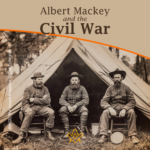 Albert Mackey and the Civil War In the midst of the Civil War's darkness, Dr. Albert G. Mackey, a devoted Freemason, shone a light of brotherhood and peace. Despite the nation's divide, Mackey tirelessly advocated for unity and compassion, embodying Freemasonry's highest ideals—fraternal love and mutual aid. His actions remind us that even in dire times, humanity's best qualities can prevail. |
 Discover the enduring bond of brotherhood at Lodge Dumfries Kilwinning No. 53, Scotland's oldest Masonic lodge with rich historical roots and cultural ties to poet Robert Burns. Experience rituals steeped in tradition, fostering unity and shared values, proving Freemasonry's timeless relevance in bridging cultural and global divides. Embrace the spirit of universal fraternity. |
 Discover the profound connections between John Ruskin's architectural philosophies and Freemasonry's symbolic principles. Delve into a world where craftsmanship, morality, and beauty intertwine, revealing timeless values that transcend individual ideas. Explore how these parallels enrich our understanding of cultural history, urging us to appreciate the deep impacts of architectural symbolism on society’s moral fabric. |
 Discover the incredible tale of the Taxil Hoax: a stunning testament to human gullibility. Unmasked by its mastermind, Leo Taxil, this elaborate scheme shook the world by fusing Freemasonry with diabolical plots, all crafted from lies. Dive into a story of deception that highlights our capacity for belief and the astonishing extents of our credulity. A reminder – question everything. |
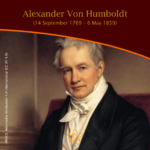 Dive into the extraordinary legacy of Alexander Von Humboldt, an intrepid explorer who defied boundaries to quench his insatiable thirst for knowledge. Embarking on a perilous five-year journey, Humboldt unveiled the Earth’s secrets, laying the foundation for modern conservationism. Discover his timeless impact on science and the spirit of exploration. |
 Voltaire - Freethinker and Freemason Discover the intriguing connection between the Enlightenment genius, Voltaire, and his association with Freemasonry in his final days. Unveil how his initiation into this secretive organization aligned with his lifelong pursuit of knowledge, civil liberties, and societal progress. Explore a captivating facet of Voltaire's remarkable legacy. |
 Robert Burns; But not as we know him A controversial subject but one that needs addressing. Robert Burns has not only been tarred with the presentism brush of being associated with slavery, but more scaldingly accused of being a rapist - a 'Weinstein sex pest' of his age. |
 Richard Parsons, 1st Earl of Rosse Discover the captivating story of Richard Parsons, 1st Earl of Rosse, the First Grand Master of Grand Lodge of Ireland, as we explore his rise to nobility, scandalous affiliations, and lasting legacy in 18th-century Irish history. Uncover the hidden secrets of this influential figure and delve into his intriguing associations and personal life. |
 James Gibbs St. Mary-Le-Strand Church Ricky Pound examines the mysterious carvings etched into the wall at St Mary-Le-Strand Church in the heart of London - are they just stonemasons' marks or a Freemason’s legacy? |
 Freemasonry and the Royal Family In the annals of British history, Freemasonry occupies a distinctive place. This centuries-old society, cloaked in symbolism and known for its masonic rituals, has intertwined with the British Royal Family in fascinating ways. The relationship between Freemasonry and the Royal Family is as complex as it is enduring, a melding of tradition, power, and mystery that continues to captivate the public imagination. |
 A Man Of High Ideals: Kenneth Wilson MA A biography of Kenneth Wilson, his life at Wellington College, and freemasonry in New Zealand by W. Bro Geoff Davies PGD and Rhys Davies |
 In 1786, intending to emigrate to Jamaica, Robert Burns wrote one of his finest poetical pieces – a poignant Farewell to Freemasonry that he wrote for his Brethren of St. James's Lodge, Tarbolton. |
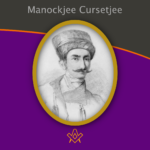 Alex Lishanin explores Mumbai and discovers the story of Lodge Rising Star of Western India and Manockjee Cursetjee – the first Indian to enter the Masonic Brotherhood of India. |
 Aleister Crowley - a very irregular Freemason Aleister Crowley, although made a Freemason in France, held a desire to be recognised as a 'regular' Freemason within the jurisdiction of UGLE – a goal that was never achieved. |
 Sir Joseph Banks – The botanical Freemason Banks was also the first Freemason to set foot in Australia, who was at the time, on a combined Royal Navy & Royal Society scientific expedition to the South Pacific Ocean on HMS Endeavour led by Captain James Cook. |
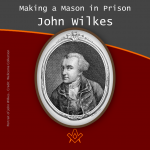 Making a Mason in Prison: the John Wilkes’ exception? |
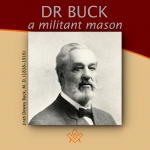 "To be a good man and true" is the first great lesson a man should learn, and over 40 years of being just that in example, Dr Buck won the right to lay down the precept. |
 Elias Ashmole: Masonic Hero or Scheming Chancer? The debate is on! Two eminent Masonic scholars go head to head: Yasha Beresiner proposes that Elias Ashmole was 'a Masonic hero', whereas Robert Lomas posits that Ashmole was a 'scheming chancer'. |
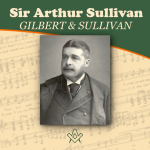 Sir Arthur Sullivan - A Masonic Composer We are all familiar with the comic operas of Gilbert and Sullivan, but did you know Sullivan was a Freemason, lets find out more…. |
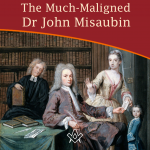 The Much-Maligned Dr John Misaubin The reputation of the Huguenot Freemason, has been buffeted by waves of criticism for the best part of three hundred years. |
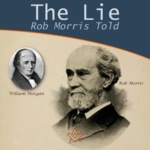 Was William Morgan really murdered by Masons in 1826? And what was the lie Masonic author Rob Morris told? Find out more in the intriguing story of 'The Morgan Affair'. |
 Lived Respected - Died Regretted Lived Respected - Died Regretted: a tribute to HRH The Prince Philip, Duke of Edinburgh |
 Who was Moses Jacob Ezekiel, a Freemason, American Civil War Soldier, renowned sculptor ? |
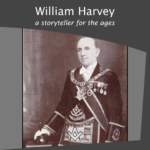 A Masonic author and Provincial Grand Master of Forfarshire in Scotland |
 Who was Philip, Duke of Wharton and was he Freemasonry’s Loose Cannon Ball ? |
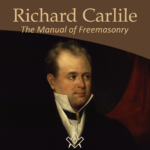 Richard Carlile - The Manual of Freemasonry Will the real author behind The Manual of Freemasonry please stand up! |
 Nicholas Hawksmoor – the ‘Devil’s Architect’ Nicholas Hawksmoor was one of the 18th century’s most prolific architects |
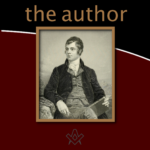 By Bro. Anthony Oneal Haye (1838-1877), Past Poet Laureate, Lodge Canongate Kilwinning No. 2, Edinburgh. |
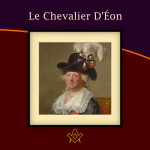 The Curious Case of the Chevalier d’Éon A cross-dressing author, diplomat, soldier and spy, the Le Chevalier D'Éon, a man who passed as a woman, became a legend in his own lifetime. |
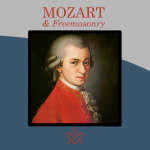 Mozart Freemasonry and The Magic Flute. Rev'd Dr Peter Mullen provides a historical view on the interesting topics |
masonic knowledge
to be a better citizen of the world
share the square with two brothers

click image to open email app on mobile device










